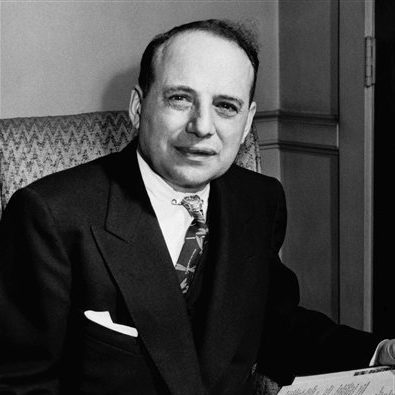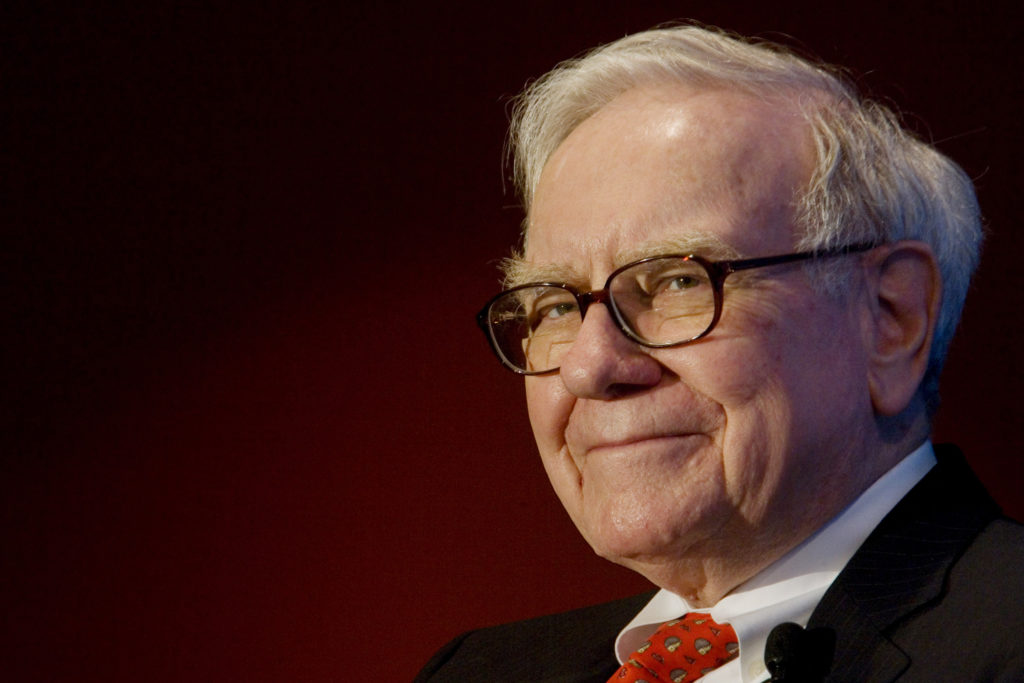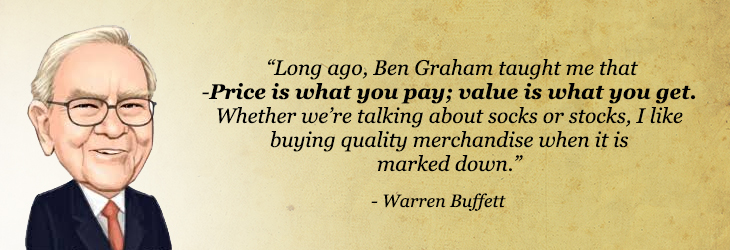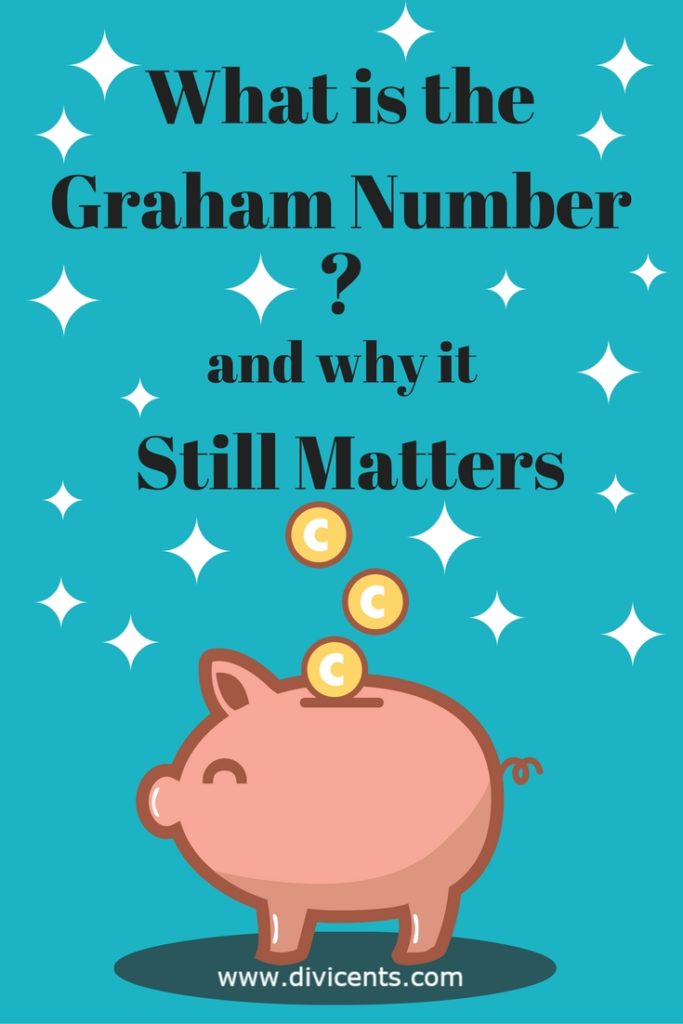The Graham Number is a calculation used to see if a stock is trading at its fair value. It’s named after the father of value investing Benjamin Graham.

Graham, known as the “Dean of Wall Street”, began teaching value investing at Columbia Business School in 1928. Together with David Dodd, they wrote their famous book Security Analysis in 1934, following the largest stock market crash in history.
Graham is arguably more known as the mentor to Warren Buffett.

After the Great Depression, many people were trying to make sense of why the market imploded. Benjamin Graham is rightly attributed to making sense of the market. He looked at the underlying value of a company instead of the stockpickers go-to method, which at the time was “earning trends.”
The Graham Number
To find the fair value of a company, Benjamin Graham came up with a formula that could be applied to any security. He wrote this formula in chapter 14 of The Intelligent Investor.

Or 22.5 times Earnings per share times Book Value per share =X
Now find the square root of X=Y
Y will be the Graham number
The Graham number will be the intrinsic value, or in other words, what a company is actually worth. If the Graham number is above the current market price of a company, it could be trading at an undervalued price!
An Example of the Graham Number
I’ll use Walmart for an example.
The current share price is $69.60.
To find out the Graham Number we need to find out it’s most recent earning per share and it’s book value per share. Then find the square root of that number.
It’s trailing 12 months (most recent) EPS = $4.64
It’s current BPS =$24.74
22.5 x 4.64 x 24.74 = 2582.85
√2582.85 = 50.82
Using this formula we come to the Graham Number or the intrinsic value of Walmart – $50.82
So it would appear that the market is overvaluing Walmart right now at the going price of $69.60 vs the Graham value at $50.82
Is it still Relevant?

Many people still buy Wal-Mart at today’s price even though it is overvalued according to the Graham Number. The reason for this could be many, but the main reason is because people still believe the company has further room to grow.
You will often here of Growth vs Value. You might never see Google or Apple hit a good Graham Number and they might still have a long way to grow, but there always is an end to how far a company can grow.
If you look at Warren Buffett’s portfolio, the world’s greatest investor, nearly 25% of the companies he owns pass the Graham Number test. Many of the rest are close. Clearly he still thinks that the formula has value.
Warren Buffett has 4 favorite books. Ben Graham wrote 2 of them. Security Analysis and The Intelligent Investor.
In writing the foreword to Security Analysis, when describing his tutelage at Columbia University under Benjamin Graham he wrote:
“what I learned then became the bedrock upon which all of my investment and business decisions have been built”.



Nice article and I would definitely recommend reading Ben Graham’s “The Intelligent Investor” book. Timeless investment advice.
It’s funny you mention that, I’m actually reading it for a third time as we speak. It is my favorite investing book followed by A Random Walk Down Wall Street.
Great article. I often use the Graham-Number as a back-of-the-envelope check to see how close stock is to intrinsic value. If the Graham Number isn’t too far off, then I’ll usually dig in and do some deeper analysis. But this is a great, and definitely still relevant way, to ballpark what stocks should be worth. Thanks for sharing your thoughts!
Jay recently posted…Trend Following Stock Picks for October 2016 (Part 4)
Np Jay,
It sounds like you use the Graham Number the same way as me. It’s a starting point to further dig.
It eliminates many high growth companies but those usually don’t even pay a dividend so they would be excluded from my portfolio anyways.
Thanks for sharing Graham’s style of investing. I read both the Intelligent Investor as well as the Security Analysis and was deeply fascinated by it.
The alternative and less well known to Graham style is the asset method developed more knownly by Walter Schloss, another disciple of Graham. It is a lot less appreciated though they dont lose out to Buffett.
“Schloss averaged a 15.3% compound return over the course of four and a half decades, versus 10% for the S&P 500” –Wikipedia
Thank you very much for bringing this to my attention! I got some reading to do 🙂
Interesting stuff! Thanks for sharing these tips 🙂
Froogal Stoodent recently posted…Best laptops for bloggers and students
Anytime 🙂
Great article. The Graham number is a quick and easy way to do a rough calculation of a company’s intrinsic value. Too bad these days most stocks are trading at levels way above their intrinsic values.
Yes, and if you look back before the crash of 2000, like today, people say the Graham model is outdated due to future EPS growth.
We will see 🙂
The site GuruFocus has the number ready for most stocks – makes it a lot easier. I think I need to check out Intelligent Investor once again, the relationship between Buffett and Graham is awesome to read about in The Snowball
Evan recently posted…Everyone Should Track Their Net Worth
I’ve visited GuruFocus for a while. It’s a nice site.
I use my own screens I built on excel. I use a few other sites like Zack’s and Morningstar to refine and check my equations. Like everything it’s a work in progress 🙂
Interesting observation that most of Buffett’s investments mirror the graham number. I just checked mine and many do not:
– My best performer of the year NVDA has a price of $70 and a graham number of $15.
– GE has a graham number of $1.80 lol.
Obviously there are other aspects to valuing these companies but it’s good to keep this conservative valuation tool in mind.
Dividend Ten recently posted…November Watchlist: Pros & Cons
Hey Greg,
The thing about the Graham number is it is a defensive check.
Companies like Google will be way out of sync because Graham never took into account things such as brand value and other intangibles. Many of the top growth stocks will never come close to the Graham number but you can be sure of one thing. When a bear market comes, like it always does, those intangibles evaporate and people really start to focus on very important things like the current ratio and intrinsic value
Cheers
I think this is a good way to interpret Graham’s number. When things get tight and the stock market really gets down to brass tacks, Graham’s number serves as a sort of reality check.
I like the example of Google, though; they’re likely to always be overvalued according to Graham’s formula–but it doesn’t mean that Google IS overvalued; their business model is something that Graham probably wouldn’t have anticipated.
Froogal Stoodent recently posted…Best laptops for bloggers and students
I couldn’t agree more Froogal Stoodent,
It is only one of many test I run when looking to buy a stock. I also look very closely at debt and cash flow among many others.
For an example, I think TESLA might be a great steal at today’s prices based on innovation. But, as a value/DIG investor I can’t logically buy it based on speculation on future performance.
Steve
Very interesting article Steve. I take it that Warren Buffett must be using a short hand formula like this given that he says does a DCF in his head. He could also be kidding of course and having someone prepare an actual discounted cashflow analysis. I like the formula but as in the above it does not capture all kinds of growth companies adequately it seems. On the other spectrum, I can imagine that companies edging around their ND/EBITDA covenant levels could look very attractive on this while they might actually be about to go bust. To summarize my view, I think this formula is a good starting point. I am planning on applying it on a few ETFs to see what it says. Thank you for writing this article.
Thanks for the comment DividendIncomeBuilder
You are 100% correct about this formula.
There are many other formulas people use to try to find fair value and many have merit.
I would never expect to see a growth company pop up here (maybe apple in a few years) because people buy off forward earning that push current ratios into oblivion. Some people buy companies based of what their earnings are going to be like in 10 years (I’m looking at you Tesla!)